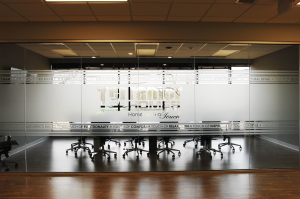Over the years, we have had the opportunity to assist many commercial tenants (or potential buyers) with their design and construction projects. Whether it is a small business increasing its office space, a retail store moving into a new shopping center, or a new church moving into temporary space while they fund-raise for a permanent building, Gontram Architecture has helped numerous tenants and building buyers realize their dreams. Unfortunately, we have also observed many other situations where the lack of due diligence has created some costly situations for themselves. Unfortunately, sometimes the mistakes are too devastating to correct with the money left in their savings account.
The old adage, “If I had a nickel for every time…” applies here. Hardly a month goes by where I don’t field a call from a panicked tenant pleading for emergency assistance. They had gone too far down the road without professional help, and now they’re in some sort of trouble. In the past month there have been a couple of these types of calls.
One was from a church that had moved into a flex building (multi-tenant office and storage use) in a space previously occupied by a church. They simply moved in and painted some walls. That was it. Unfortunately, the previous church was not legally permitted, and that has now fallen back on the current church. The local building inspector has limited their services to 49 people until they can get the church legally permitted.
The other call was from a fitness facility that moved into a building formerly occupied by a distribution company. The fitness tenant moved from their previous location, set up shop, and sold memberships and training sessions. A month later, during a routine inspection by the Fire Marshal, it was discovered that they never pulled any permits or had any inspections prior to opening up for business. The tenant had wrongly assumed permits weren’t required since they “didn’t do any work.” It has since been determined that their business constitutes a Change of Use for the building and property, and they are now looking at many thousands of dollars worth of Code upgrades that are required in order for them to obtain “permission” to occupy the building – money they hadn’t planned on spending – money they don’t have. Had they known this upfront, they wouldn’t have moved.
Unfortunately, tales like these are commonplace. But, they don’t have to be.
Here are a few things commercial tenants can do BEFORE YOU SIGN A LEASE to avoid costly mistakes:
1. Hire a Leasing Agent to represent YOU, the tenant. It costs you nothing. The commission paid to the tenant’s agent comes out of the landlord’s pocket, which is accounted for in the pro-forma. (In fact, if you are not represented, the landlord simply gets to pocket the commission, usually.) The Leasing Agent can help you find the property, negotiate a fair, competitive rate and any concessions (like free rent and tenant improvement allowances), help review the paperwork, and guide you through the whole lease process.
2. Hire an Architect BEFORE you sign a lease. Yeah, I know…self-serving, right? Well, duh! But, while many tenants know what their business needs, they don’t know what the Code says is required for their space, and how much it costs. Unfortunately, many real estate agents are not Code-savvy either. If you don’t find out that a $20,000 fire alarm system is required, or more restrooms are required until AFTER you sign the lease, or you don’t need as much space as you think you do – it’s too late to do anything about. But, if you find out before, you have all of the options and negotiating power. For help, see our other post How to Hire an Architect.
3. Discuss your potential occupancy with the local Inspections and Zoning Departments to make sure it would be allowed in the first place. The property must be zoned appropriately to allow your business to legally operate on that property. They could also give you some “heads up” to some potential obstacles and permits required. Be advised, however, some of these folks are VERY busy and are liable to simply advise you to “hire an Architect.” In that case, see #2 above.
4. Figure out the financial aspects of the project, and how you are going to pay for it. Again, seems kind of obvious, “but if I had a nickel…” When discussing finances with tenants, there is a natural reaction to keep this things more private than they should be, to keep the Architect in the dark about how much (or how little) you want to spend. The Landlord is definitely going to need to know what you are going to contribute, and how it is going to be paid. Likewise, the Architect needs to know what your budget is, and how it’s going to be paid. If you are not being realistic, the Architect can help straighten you out before you sign the lease. Again, after the lease is signed, it is a rare Landlord that will care if you run out of money half way through. Rent is still due the 1st of the month!

Gontram Architecture assisted Terramor Homes and the building owner with numerous schematic schemes BEFORE lease execution.
5. Don’t start the process too late. The previous 4 steps take time and you don’t want to wait until you need to move out of your current space. Analyzing your needs, finding space, negotiating a lease, obtaining permits, securing financing, etc. can take several months for seemingly simple projects, a year or more for more complex ones.
Whether you are starting, relocating or expanding a business, it is stressful and expensive enough already. Avoid unnecessary expenses and impossible situations by following these steps. And maybe I will field a few less urgent calls from panicked tenants with their life savings on the line.



